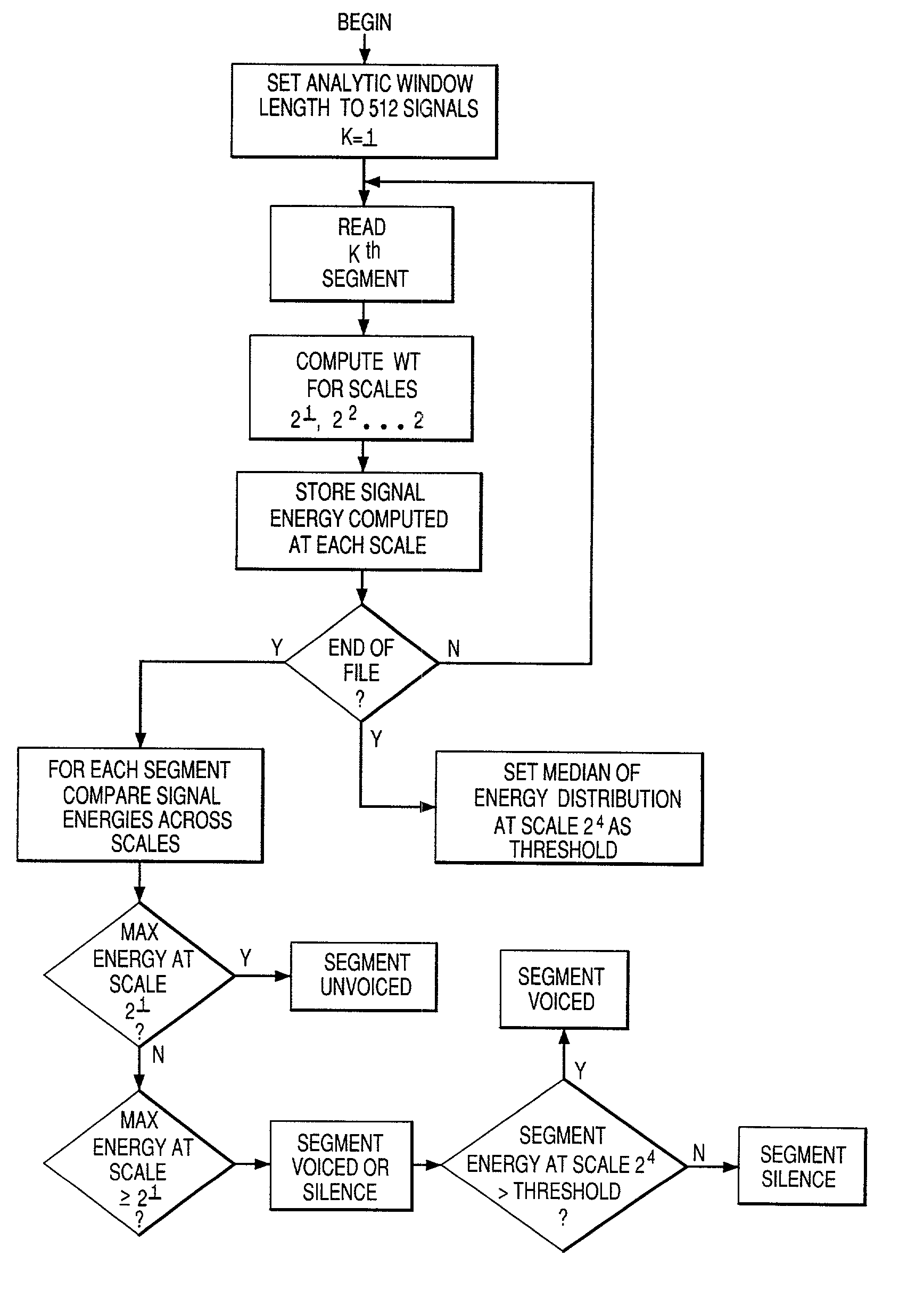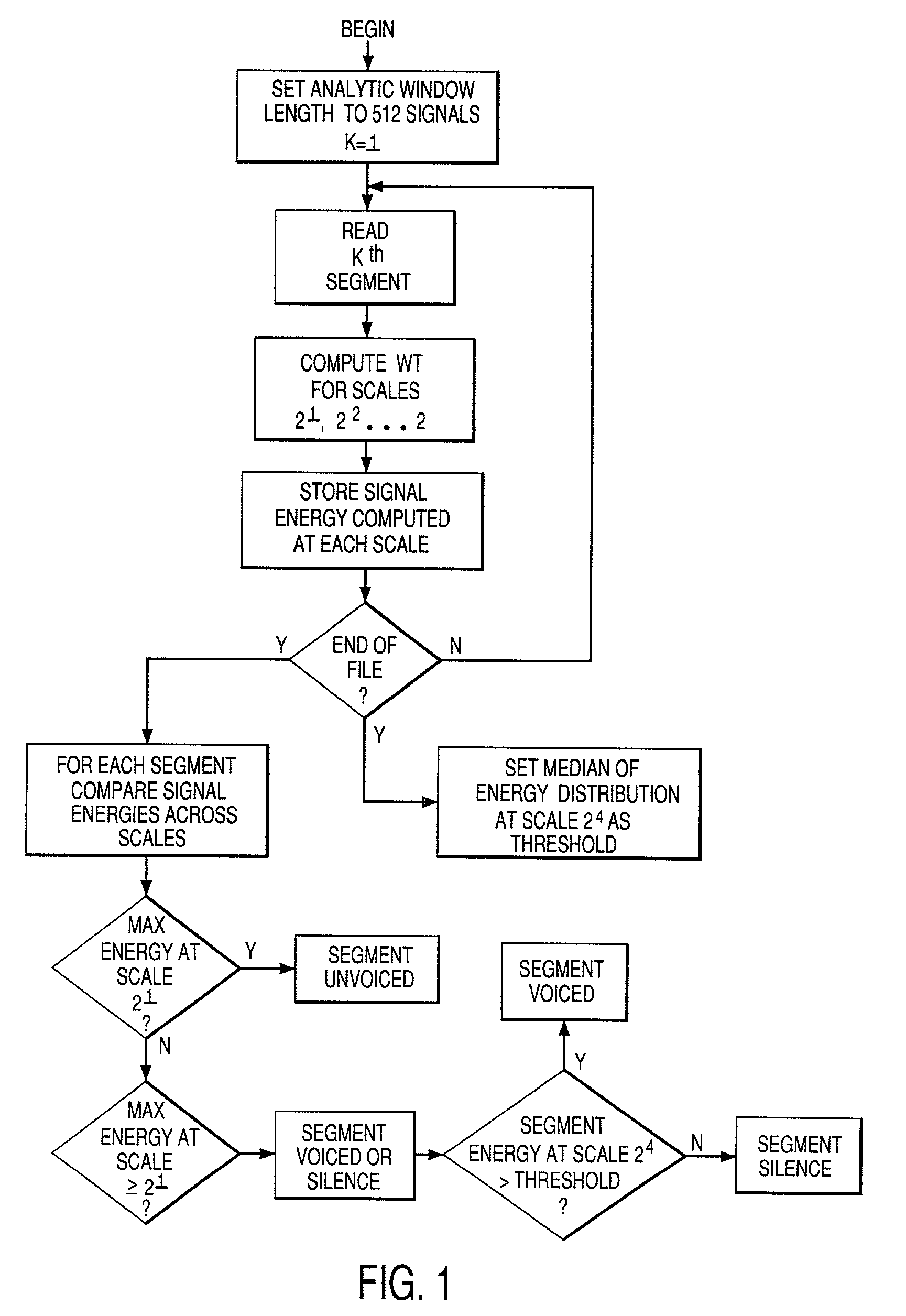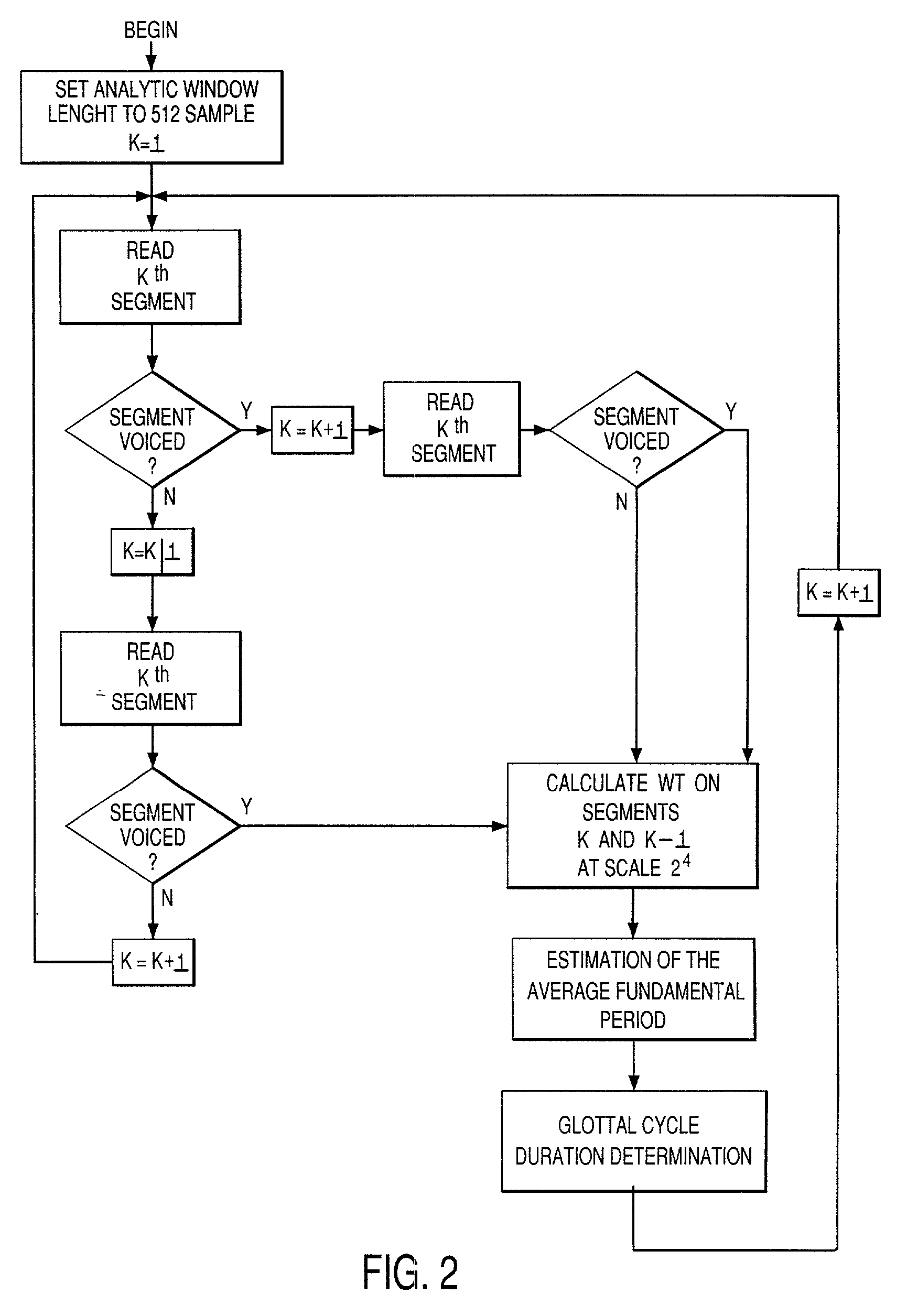Method for analysis of vocal jitter for near-term suicidal risk assessment
a risk assessment and analysis method technology, applied in the field of near-term suicidal risk assessment methods, can solve the problems of inconsistent overall picture as generally reported heretofore, incongruity and disparities, and no widely accepted results
- Summary
- Abstract
- Description
- Claims
- Application Information
AI Technical Summary
Problems solved by technology
Method used
Image
Examples
Embodiment Construction
[0038]This invention provides methods and apparatus for assessment of near-term suicidal risk. In one preferred practice, the method comprises several steps: Initially a patient's voice is sampled. In one preferred embodiment, such voice sampling is digital; in another embodiment the sampling is analog. As a source of data, a clinician may submit a sample tape from a client session for analysis. If the original voice sampling is from an analog recording, such recording is preferably then digitized. For example, one may digitize the recording using a analog to digital converter, such as a 16-bit A-D converter. A sampling rate of 10 KHz is suitably used, while other sampling rates also provide data of appropriate integrity for the acoustic analysis. Such converted digital signals are desirably edited using audio editing or studio software to remove lengthy pauses or periods of silence, so that a continuous or nearly continuous sample of speech is generated. One suitable software produ...
PUM
 Login to View More
Login to View More Abstract
Description
Claims
Application Information
 Login to View More
Login to View More - R&D
- Intellectual Property
- Life Sciences
- Materials
- Tech Scout
- Unparalleled Data Quality
- Higher Quality Content
- 60% Fewer Hallucinations
Browse by: Latest US Patents, China's latest patents, Technical Efficacy Thesaurus, Application Domain, Technology Topic, Popular Technical Reports.
© 2025 PatSnap. All rights reserved.Legal|Privacy policy|Modern Slavery Act Transparency Statement|Sitemap|About US| Contact US: help@patsnap.com



